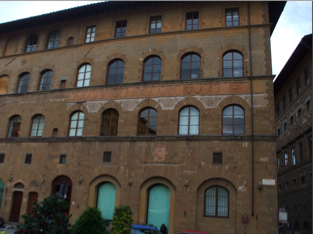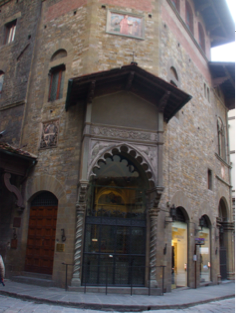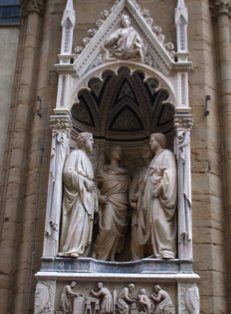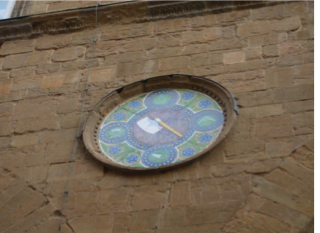Part III. Italy
Chapter 50. Joining the Guild [March 20, 1348]
Cultural Explanations
 |
Part III. Italy Chapter 50. Joining the Guild [March 20, 1348] Cultural Explanations |
|
| In this chapter Bávlos learns about guilds | |
| Tribunale di Mercantanzia |
In this chapter, Bávlos learns about the guild system and the various status differences associated with different professions in medieval Florence.
 |
 |
| Tribunale di Mercantanzia, the main headquarters for medieval guilds in the Piazza della Signoria | Remains of the once grand chapel of the Virgin, votive site for the members of the Arte dei Medici e Speziali |
Florence had one of the best developed guild systems in all medieval Europe, and the various guilds cooperated in managing and governing the city. Later, the careful balance between the various artisans and professions would be toppled by the bankers, led by the de' Medici family, who would transform Florence into the seat of a wealthy Grand Duchy, one of the most powerful states in all Renaissance Europe. In 1348, however, the balance of power still lay in the hands of the townspeople, who participated actively in maintaining the commerce and order that had made their city great.
 |
 |
The four patron saints of the Woodworkers guild; statue desplayed outside the guild church Chiesa di Orsanmichele |
The ax shield, designating the seat of the guild of Legnaioli, Woodworkers and Builders |
The Italian Wikipedia has a phenomenally good series of articles on Florentine guilds. These were major sources for this chapter. You can read about the guilds in general in the article Arte di Firenze, and about Buonamico's guild in particular in the article Arte dei Medici e Speziali.
The story of the impoverished moneychanger Averardo de' Medici, is, of course, a reference to the family that would eventually come to rule Florence, Tuscany, and a large part of the rest of Italy, the Medici clan. Averardo died in 1363, leaving his rather meager inheritance to his five hungry sons. One of these, Giovanni (1360-1429) would build a fortune in his father's moneychanging profession, keeping his head low but making wise and profitable loans. His son in turn, Cosimo il Vecchio (1389-1464) would follow in his father's and grandfather's footsteps, lending well, amassing more and more money, and eventually marrying a countess. The family's ruthless greats would include Lorenzo il Magnifico (1449-92), Cosimo I (1519-74), Cosimo II (1590-1621), and of course, some popes: Leo X (1475-1521), Leo XI (1535-1605), and Clement VII (1478-1534). Again, the Italian Wikipedia article is excellent on the incredibly important Medici family, once the wealthiest people in the world, who eventually disappeared without descendents.